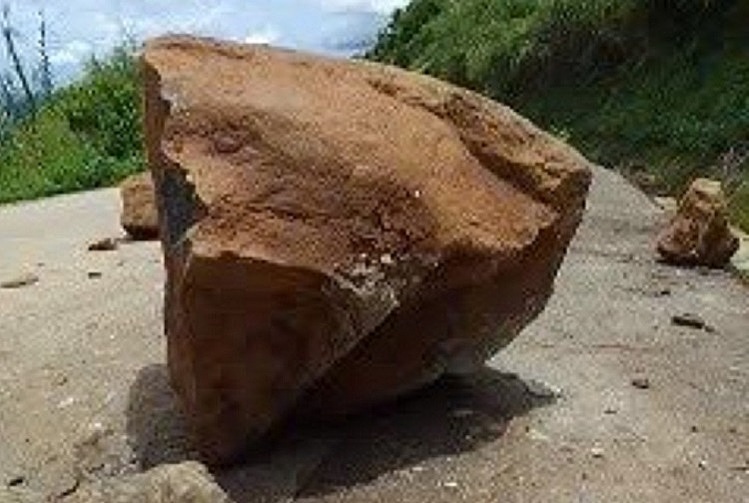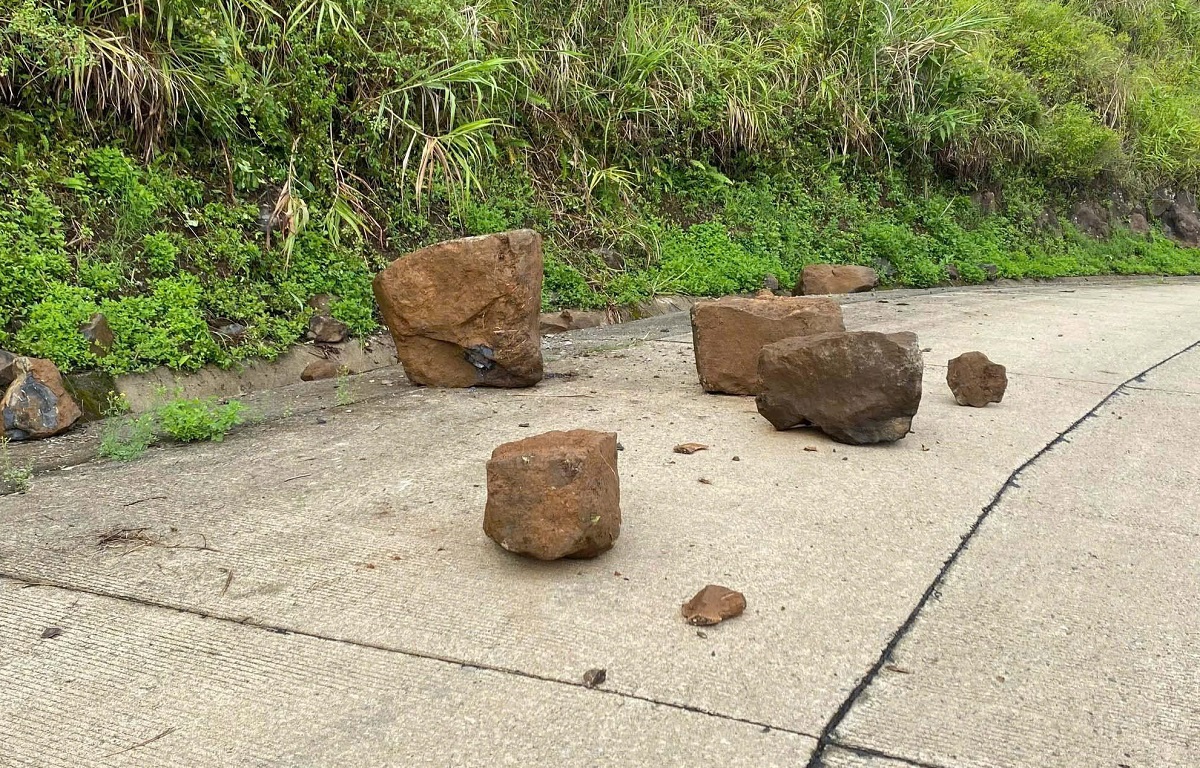Since early September, rocks measuring 0.3 to 1 meter in diameter have been falling onto the road near the famous grasslands of the former Ba To district. Many large rocks are cracked and unstable, threatening to slide down at any moment, especially during heavy rain.
 |
Rockslide near the Bui Hui grasslands. Photo: Thao Nguyen |
Rockslide near the Bui Hui grasslands. Photo: Thao Nguyen
The most dangerous section of the road stretches for about 6 km, with 5 to 6 rockslide points between the commune headquarters and the grasslands. The route features a mountain on one side and a deep ravine on the other, along with numerous bends. Morning fog and afternoon clouds further obscure visibility, making travel even more challenging.
Residents of Bui Hui village often have to take a 2.3 km detour to reach their homes. Only 700 m of this alternative route is paved; the rest is muddy and prone to collapse. "During the rainy season, the risk of landslides is high, and many people don't dare to take the main road," Nguyen Van Tuan said.
A commune survey revealed dozens of rockslide points along the entire 20 km route from the commune center to Ba To. These slides cause road subsidence and block drainage ditches. Local authorities have repeatedly cleared the rocks, installed warning signs, and advised against travel during heavy rain, but the danger persists.
 |
Fallen rocks on the road to Dang Thuy Tram commune. Photo: Thao Nguyen |
Fallen rocks on the road to Dang Thuy Tram commune. Photo: Thao Nguyen
Nguyen Thi Van, chairwoman of the Dang Thuy Tram People's Committee (UBND), warned that a major landslide could isolate the commune from the district center. She urged provincial authorities to address the rockslide hazards and complete the detour to ensure safety and support tourism development in the area.
The 20-hectare Bui Hui grasslands, known for their purple sim flowers, have been a popular tourist attraction in Quang Ngai since 2018.
Pham Linh












